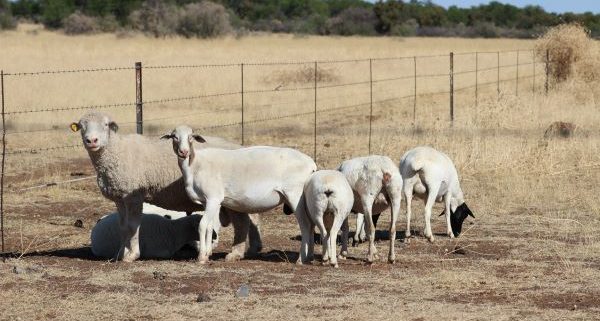Respiratory disease in ruminants – African Farming
WHAT IS RESPIRATORY DISEASE?
Respiratory disease generally refers to a disease whose symptoms include mainly the respiratory tract, which starts with the nose and ends with the lungs. It remains the costliest disease in the form of both mortalities and/or poor health.
WHAT CAUSES THE DISEASE?
Respiratory disease is complex and will often have more than one cause. Some of the causes may not necessarily be due to an infection. Also note, animals may experience breathing difficulties not necessarily as a result of respiratory disease but because of other conditions that negatively impact the lungs. Examples include pressure on the lungs when an animal suffers from bloat or fluid accumulation in the chest cavity due to heartwater.
INFECTIOUS DISEASES
The cause of infection may include certain bacteria, fungi and viruses, the latter mainly involved in damaging the primary tissue, while bacteria may often be as a result of opportunistic invasions when the immune system is overloaded. Examples of respiratory disease due to infections in some ruminants include pasteurellosis (bontlong), jaagsiekte, progressive pneumonia (maedi-visna), contagious caprine pleuropneumonia (CCPP) and contagious bovine pleuropneumonia (CBPP).
PASTEURELLOSIS
Pasteurellosis is the most common respiratory disease and often leads to fatalities, especially if not timeously treated. It affects cattle, sheep, goats and other farm animals.
HOW DO ANIMALS CONTRACT THE DISEASE?
The main route of introduction is inhalation. It is believed young animals get exposed to the pathogens very early in life but rarely get sick. The bacteria responsible for the disease often reside in the upper respiratory tract of healthy animals and only tend to cause disease when an animal is subjected to conditions that overwhelm the body’s natural defence systems.
WHEN TO EXPECT THE DISEASE?
The disease tends to be more prevalent in autumn and winter. It can affect animals of all ages, but young animals are more vulnerable. This is believed to be attributed to young animals’ immature immune systems.
Stressful conditions that may make it easy for ruminants to become more susceptible to the disease include:
■ Dust
■ Harmful gases
■ Diets high in carbohydrates
■ Large fluctuation between day and night temperatures
■ Transportation (especially over long distances)
■ Prolonged hunger or starvation
■ Weaning shock
■ Overcrowding
■ Adaptation problems
■ Dehorning and vaccination
■ Any other stressful handling of animals
MANAGEMENT MISTAKES
Incorrect dosing may also result in aspiration pneumonia when oral medications accidentally end up in the lungs. This may also happen when food or water accidentally enters the windpipe. Ensure you know how t correctly insert stomach tubes or dosing guns.
Or ask for assistance from someone who is trained to perform such tasks. Aspiration pneumonia can also be due to difficulty in swallowing (seen often with certain paralytic diseases like botulism, rabies, etc.) or birth-related disorders, such as cleft palate.
WHAT ARE THE SIGNS?
Early in the disease animals may exhibit a fever, loss of appetite, and in severe cases animals be seen with abnormally fast breathing, extended necks, and legs pushed outward away from the body. These animals may breathe with their mouths open and groan with every breath. Coughing and sneezing is also quite common.
A lot of the animals will also present with discharges from the nose and often from the eyes too. Affected animals may be reluctant to move or tend to lag behind when the flock or herd is moved. If left untreated these animals may die or start losing a considerable amount of weight. .
PREVENTION AND CONTROL
It remains far cheaper to prevent the disease by vaccination than attempting to treat sick animals. The disease can be successfully treated with antibiotics and any other supportive therapy (anti-inflammatories), especially if the treatment intervention is early enough and done correctly. Badly affected animals that are treated too late may still likely succumb to the disease.
During treatment, it is advisable for these animals to be given good nursing care and adequate nutrition. They will benefit from being isolated from the rest of the herd or flock to minimise the stress of interacting with other animals during the recovery period.
VACCINATION
There are commercial vaccines available in South Africa against cattle and sheep/goat pasteurellosis. It is recommended that animals be vaccinated at the earliest permissible age according to individual manufacturers of the different vaccines, including booster doses. On problem farms it may even be a good idea to vaccinate for pasteurellosis every six months.
It is critical to pay careful attention to vaccine handling and accompanying instructions prior to and during its use. This includes maintenance of the cold chain, protection from sunlight and working with it as hygienically as possible. It is also advisable to inject only on clean, dry skins to minimise the risk of injection-site infections.
Healthy animals have the greatest chance of benefitting from vaccines. This means paying careful attention to the nutritional state of animals before vaccination. This can only be of benefit to your farm, especially during the onset of winter, when animals might lose weight.
Speak to your local veterinarian or animal health technician regarding basic vaccination programmes that can help make a difference in your operation. Please feel to also contact us on sello.maboe@obpvaccines.co.za.
Dr Sello Maboe is the Technical and Marketing Manager at Onderstepoort Biological Products.




Leave a Reply
Want to join the discussion?Feel free to contribute!